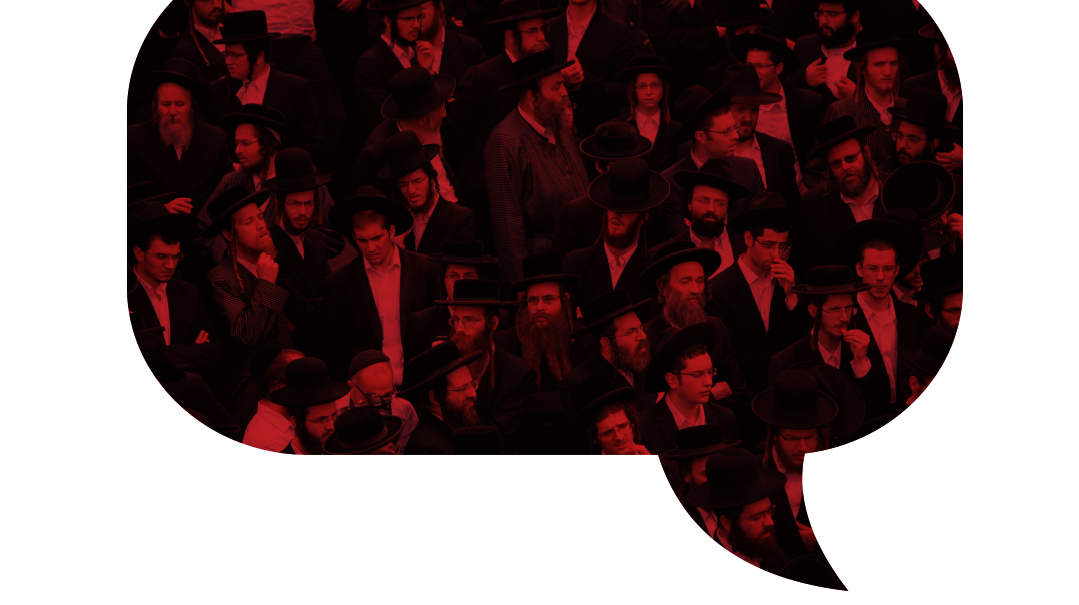Best Face Forward

Over the last 12 months our nation has gone from being, existing, showing ourselves through a picture, to actually showing our face
This winter, new technology was developed that allows users to upload the face of someone, anyone, from any time, and the app will show you how they looked in motion, rather than frozen in time.
(Here’s the official pitch: Deep Nostalgia™ uses deep learning algorithms to produce remarkable results. You can animate any of the faces in your photos to see them move, blink, and smile. It works equally well on black and white photos and photos that were originally taken in color. Share the short animated videos of your ancestors smiling, blinking, and turning their heads with your friends and family and see what they think.)
Despite the hype, I found the results weird and creepy, and I am quite sure they bear no resemblance to the people they represent.
I never saw the Chofetz Chaim or Rav Shaye’le Kerestirer in real life, but I could immediately sense that the algorithm-generated version of their radiant faces in motion was counterfeit.
Over recent months, the letters section of this magazine has been crackling with passion, enthusiasm and indignation about the propriety of sending out photos of shidduch candidates, with opinions piling up faster than Andrew Cuomo’s enemies.
A bochur in shidduchim, clearly speaking for many other readers, wrote that l’maiseh, pictures can help a boy know if a suggestion is b’chlal nogeia, saving time and energy.
A side he’arah: Even if the bochur is right in cheshbon, he is wrong in lomdus, because a picture is the same bluff as the app. It’s pixels on a screen, and there is no real resemblance between that and the face of an actual, living, breathing human being.
Buddy, you will get engaged, pose for pictures together, be married, but you will probably not have seen her face yet. It can take some time. Don’t cheapen that.
A man’s wisdom makes his face shine (Koheles 8:1).
In all areas, said Rav Itzele Peterburger of Rav Yisrael Salanter, my rebbi was able to conceal himself. He concealed his gaonus and he concealed his tzidkus. But there was one thing he could not hide: the radiance of his face.
That light Reb Itzele referred to? No picture could ever have conveyed it.
You can see this, with your very own eyes, if you look at a picture of, say, Rav Chaim Kanievsky shlita. If you’re lucky enough to see him in person, you know that the glow of the picture, significant as it may be, is dull compared to what actually seeing him makes you feel.
To stretch an already tenuous mashal: Over the last 12 months our nation has gone from being, existing, showing ourselves through a picture, to actually showing our face.
It’s the same color and shape, but now it’s bursting with life.
At last winter’s Siyum HaShas in Montreal, Rav Yaakov Reisman was guest speaker. If men have the freedom and space to devote themselves to a serious shiur or chavrusa each day, he said, it’s because their wives make that possible. The Rav related how one night, he’d seen a local balabos learning intently, and he’d been inspired to take a picture on his cell phone, which he then had his rebbetzin send to that gentleman’s wife. The picture was hung on the refrigerator — Daddy learning! — and each evening, when the mother pushed herself through the inevitable evening routine of bath-times, homework, and bedtime, she looked at it. It filled her with joy and purpose.
Now, did she doubt her husband was telling the truth when he’d told her was going out to learn? Of course not.
But now she saw this face — the face of a Yid learning Torah — and it made her proud.
Like so much else said at that time, it was sort of prophetic, words for the road ahead.
We’re just past the one-year anniversary mark of the coronavirus. The gemara in Chulin presents the opinion that a treifa, an animal with what seems to be mortal injuries or defects, cannot live 12 months: If it does, then those wounds are clearly not life-threatening.
We did the whole 12-month cycle, from Pesach until Pesach, and with each passing month, our faces became a little more radiant. It started when people who never thought they could or would lead a Seder squared their shoulders, opened their Haggados, and got to work. Most of them haven’t stopped leading since, all the way through until Purim came and boys couldn’t rent cars and costumes, we couldn’t sit at seudos with the crowds we’ve come to expect and there was no pounding music, yet we somehow felt simchah, there in our quiet homes. (Maybe even more simchah?)
Montreal, where I live, has been the center of a swirling carousel of bylaws, a government without a clear direction (or access to vaccines) taking haphazard shots and hoping some will hit the mark. While stores and even theaters are open, shuls, whatever size they might be, are only allowed ten people.
A friend told me about being the 11th person headed into shul on Purim morning, and as the large glass door closed behind him, he looked sadly at the thick paper with which the gabbaim had been forced to cover it, the sunlight also banished from shul on this joyous day.
An older gentleman approached from behind him and fingered the heavy brown paper. “On Yom Kippur, when I bow Korim this year, this will be the paper I will fall down on.”
The thought hung there, perfect in its simplicity: We will go down on the floor, nothing, nullified, submitting to the One and Only Reality, and we will remember this time when we lived it.
If our winter had a single steady theme, it was a link that said something along the lines of, “Please help my amazing son’s amazing school do amazing things,” and we went along with it. I have no data (people who write these kinds of columns never do) but I would guess that more tzedakah was given this winter than in years past. A whole generation of 15-year-old nephews so shy they can barely make eye contact with you at simchos suddenly found their voices, calling you with all the jollity and bonhomie of your insurance guy, perhaps emboldened by half the yeshivah sitting around them. (Push him, get him up to 54, he won’t care.)
(There are not yet any studies indicating what impact the realization of thousands of teenagers that they can, in fact, raise money and that it’s “so easy” will have on future generations.)
America tore itself apart at the seams and ideological divides brought us to a near-civil war — but among frum Jews you’ll find that even though, for example, Lakewood and Woodmere don’t really overlap in approach to mask wearing, there’s none of the rage and certainly no hate (maybe a bit of smugness on one side, indignation on the other, but that’s it). We know we’re a family and we’re good with it.
You see, this year we burst off the flat, two-dimensional résumé — good middos, well-liked, parents are wonderful! — and we became a face, shining brightly.
We showed You our face, dear Father.
On the Seder night, when we open that door… might You show us Yours?
(Originally featured in Mishpacha, Issue 854)
Oops! We could not locate your form.








